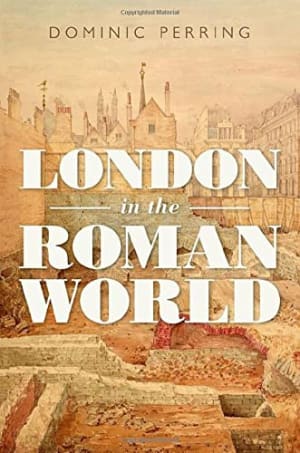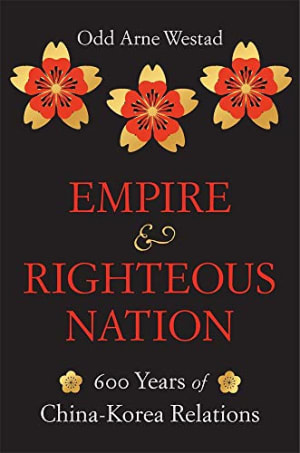Did you know that this review is written in Phoenician? Given that you can read this, that means you can read Phoenician - congratulations.
More accurately: this review is written in the Latin alphabet which is derived from the Phoenician alphabet (via Romans, Etruscans and Greeks). If you are using google translate to read this review in Arabic, Russian, or Hebrew you are also using the Phoenician alphabet. But for a people with such a wide-ranging and long lasting influence the Phoenicians are surprisingly poorly known.
Carolina Lopez-Ruiz wants to change this with her important new book Phoenicians and the Making of the Mediterranean. It is her view that even though the importance and influence of the Phoenicians is undeniable, they don’t get the recognition that they deserve - and that we have an impoverished view of the early iron age Mediterranean as a result.
The… who were they again?
Starting with the basics: the Phoenicians were a people whose origins were in the Lebanese coastland on the far East of the Mediterranean, who then came to inhabit the whole length of this sea, even as far as the Atlantic coast of Portugal.
They were the first people to make the Mediterranean an interconnected sea, linking peoples around its shores into a shared elite culture.
They have been variously known as Phoenicians (the Greek word), Punic (the Roman term), Carthaginians (a Phoenician city state in North Africa) - but they are all the same people: a group of sea orientated traders and colonisers who enjoyed a spectacular economic, demographic and cultural flourishing from the start of the first millennium BCE (i.e. from about 1,000 BCE - until the Greeks and Romans dominated the Mediterranean in turn).
The ABC of the Phoenicians
And what about that alphabet? Lopez-Ruiz tells us that this was the first official alphabet where one sign = one sound. Previous scripts which had originated in Mesopotamia or Egypt had equated signs with a mix words, syllables, categories and sounds. Taking this one sign = one sound step dramatically reduced the number of symbols needed from hundreds to the twenty something we are familiar with today.
The direct line of transmission from the Phoenicians is still remarkably clear. For example the first two sounds of the Phoenician alphabet were “aleph” and “bet” - their words for ox and house respectively. Hence our word: alphabet.
Interestingly the shapes of the letters were adapted from Egyptian hieroglyphs. So the ox hieroglyph (remember “aleph” was the Phoenician word for ox) if you lay it on its side and squint a bit becomes the Phoenician letter A (which looks like our capital “A” lying on its side, have a look here to see what I mean the Phoenician alphabet on wikipedia).
The B letter shape comes from the Egyptian hieroglyph for house (“bet” being house in Phoenician) and so on.
The applebat
It’s fun to imagine what would happen if we were figuring out our alphabet symbols from scratch nowadays. Probably we would choose the emoji for Apple to represent the A sound - 🍎. Then we might select the emoji for Bat to represent the B sound - 🦇, and Crab for the C sound - 🦀. I guess we would then simplify the 🍎, 🦇 and 🦀 shapes to “O”, “M” and “G” as they look a little like an apple, bat and crab but are easier to write.
Then instead of learning our ABC we would be learning our OMG, and rather than being called the alphabet it would be known as the applebat. Who knows, maybe it could still catch on?
Cool dudes
All this applebantery though, while enjoyable, misses the key point. Which is that while the alphabet is a pretty handy system for writing stuff down, people don’t adopt a new script based purely on how easy it is to use. Otherwise it wouldn’t have taken the Chinese 2,000 years to simplify their script and when they did they probably would have made it much simpler.
To put it another way: the various bickering Greek city states didn’t get together in 800 BCE and set up a working group to weigh up the pros and cons of the different symbol systems that they could have used for making notes. Instead they adopted a script that was already all over the place and which they thought looked pretty cool. Why did they think it looked cool? Because they thought the Phoenicians were pretty cool guys. Or as Lopez-Ruiz puts it:
Writing systems and conventions are culturally and historically meaningful, and the alphabet’s contribution came precisely at a time when Phoenician culture was highly influential, when the economic power and reach of Tyre [the pre-eminent Phoenician city state] was at its height, and when doing things “in the Phoenician way” (phoinikizein) was not stigmatised but desirable.
Lopez-Ruiz, Phoenicians and the Making of the Mediterranean
A comprehensive survey
I have focussed on the alphabet so far because it is a nice way to get a handle on the importance of the Phoenicians, but the Making of the Mediterranean is far more wide-ranging, logging the centrality of the Phoenicians in pottery, building techniques, metalwork, burial rituals, and mythology. She is keen that we take them seriously as a people and as a culture rather than simply being seen as middlemen who shipped Egyptian style goods - and keen that we stop downgrading their overseas towns and cities to mere trading posts.
Her survey starts in Spain in the West, before winding its way through the other key Phoenician areas of settlement or influence - North Africa, Sardinia, Italy, Sicily, Greece, Cyprus, Crete - and ending up in the Levantine homeland of what is now the coastal parts of Lebanon, Syria and Israel.
It’s not all about them
One of the things I enjoyed about the book is that it is not just about the Phoenicians, it is also about all the people they interacted with when they settled or traded in a place. Locals weren’t just gawping recipients of Phoenician thingamybobs and gewgaws. They would engage on their own terms - and often had an influence on Phoenician culture in turn.
Historiographically disadvantaged
This all raises the question: if these guys were so important how come we don’t already know about them?
Part of the problem is that none of their literature survives. While we have thousands of inscriptions in Phoenician (“this cup belongs to Hiram” and so on) we don’t have any Epics of Phoenicia-mesh, or Phoenicia-llads. It is one of the great ironies of the iron age that while we write everything in Phoenician letters, we can’t read any of their writings.
However the archaeological evidence is substantial and becoming more detailed. For example it is now no longer possible to argue that “the Greeks got there first” because we can see that Phoenician materials pre-date Greek materials across the Mediterranean.
But Lopez-Ruiz also points to a more sinister historiographical theme which promoted the Greeks as fore-runners of European identity, and rejected the Middle Eastern origin angle provided by the Phoenicians - anti-semitic by definition. She argues that we are still not free of this bias today.
Style vs substance
It is not an easy read: because it covers so much in a little over 300 pages, the prose is very dense. Partly this is because Lopez-Ruiz has an academic audience in mind rather than ordinary punters. She is trying to convince a community of experts on the centrality of the Phoenicians and while the general public is not excluded, it is not exactly welcomed either.
So for example, words such as aniconic, autochthonous and apotropaic are sprinkled in the text - meaning (it turns out) “symbolically representative”, “home-grown”, and “evil averting” respectively.
But it rewards the effort, even for the uninitiated.
A more colourful picture
For instance: I was very happy to learn more about the “formative period” of classical (ie Greek) culture, and to see this placed into a convincing context rather than spring magically into being, statues and all.
The book also links the classical world to the age before the bronze age collapse (about 1,200 BCE) when the Mycenaean Greeks, the Egyptian and Hittite empires all went simultaneously belly up for reasons still hazy. In fact the Phoenicians self-consciously embodied this link with the past. Their key cities of Arwad, Tyre, Sidon and Byblos were islands of continuity in the chaos that surrounded them: ancient empires going up in smoke on all sides. They were the culture bearers of a previous golden (bronzen?) age and this was a key part of their universal appeal.
Conclusion
In conclusion: this is an important book, albeit not an “easy-reader”. Phoenicians and the Making of the Mediterranean provides a comprehensive survey of the role of the Phoenicians and enriches our view of the ancient Mediterranean world. And you might find yourself experiencing a few 🍎🦇🦀 moments along the way.
Book details
(back to top)- Title -
Phoenicians and the Making of the Mediterranean
- Author -
Carolina Lopez-Ruiz
- Publication date -
January 2022
- Publisher -
Harvard University Press
- Pages -
384
- ISBN 13 -
978-0674988187
- Podcast episode -
Ithaca Bound: Phoenicians Settling in Iberia w. Dr. Carolina López-Ruiz
- Podcast episode -
- Podcast episode -
- Amazon UK -
- Amazon US -



